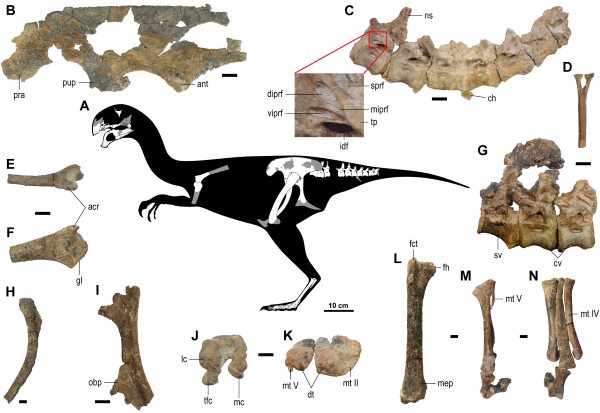Are all dinosaurs horrible monsters with scary teeth? Actually not because a research group from Seoul National University (South Korea) has discovered a new species of oviraptorosaur, known to be toothless. And this, moreover, particularly pretty
He is about to end up run over, his mother saves himAre all dinosaurs horrible monsters with scary teeth? Actually no. A research team from Seoul National University (South Korea) has discovered a new species of oviraptorosaur, known to be toothless. And this, in addition, particularly pretty.
A new dinosaur, therefore, without teeth and also very nice to the eye. Seoul paleontologists found the remains of a skeleton in the Gobi desert in Mongolia, probably very young or just puppy, and they dated it to the Upper Cretaceous, a prehistoric period between about 100 and 65 million years ago.
Oviraptorosaurs were already known dinosaurs from the Cretaceous period of Asia and North America, but, naming a heterogeneous group of bird-like plumed ones, it was not to be excluded that not all of them had been found.
Incidentally, despite the abundance of nearly complete skeletons discovered in southern China and Mongolia, the feeding strategies of these toothless individuals they are not yet clear. The discovery could therefore open the door to new theories (or to the verification of previous ones) in this regard.
The new species, called Gobiraptor minutus, also has a particular characteristic, which distinguishes it from its "cousins". In fact, it appears to have unusual thickened jaws, which suggests that individuals ate hard foods such as eggs, seeds or hard-shelled molluscs, a hypothesis that had already been formulated for all oviraptorosaurs.

From the histological analyzes of the femur, the scholars instead deduced that the specimen probably belonged to a very young individual. Furthermore, the discovery of the skeleton took place in the Nemegt Formation of the Gobi desert, characterized by sediments of channels of an ancient river. It is known that in that area the climate of the time was humid, confirming other previous hypotheses on the typical habitat of these species.
Last but not least, the absence of teeth is in turn the basis of such a diverse series of species, as the particular characteristic has probably determined the adoption of very different feeding strategies, which in evolution have led to many different species.

How a "small" discovery can open many doors and close others forever. Nature (and science) never ceases to amaze.
The research was published in Plos One.
Read also:
- The oldest and largest predatory dinosaur in history has been discovered in Lombardy
- Fossil of the first giant dinosaur discovered: it is 200 million years old and will make history rewrite
- Very rare African dinosaur discovered. Paleontologists have always been looking for it
Roberta de carolis
Photo: Plos One


























